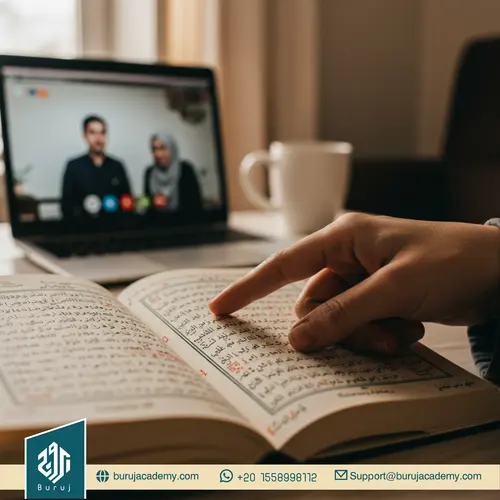Arabic Grammar For Beginners: Your Guide to a Rich Language
This guide is the perfect starting point for your journey. We will introduce you to the most fundamental concepts of Arabic grammar for beginners, focusing on the absolute essentials you need to build a strong and lasting foundation. We will cover the basics of the alphabet, the crucial root system, and the core properties of Arabic nouns.
Learning a new language opens doors to rich cultures, new friendships, and exciting opportunities. Arabic, a Semitic language with a history spanning over 1,400 years, is spoken by more than 400 million people worldwide. Its beauty lies in its intricate structure and unique grammatical rules. For many beginners, Arabic grammar can seem daunting, but with a solid understanding of its core principles, you can unlock the door to this fascinating language.
Key Concepts in Arabic Grammar for Beginners
Before diving into the details, it’s helpful to understand a few core principles that make Arabic unique and logical. Grasping these ideas early on will make the rest of your learning journey much smoother.
- The Root System: The genius of Arabic is its root system. Most words are derived from a three-letter root that carries a core meaning. For example, the root K-T-B relates to the concept of writing. From this single root, you can form words like “book” (kitab), “writer” (katib), “library” (maktaba), and the verb “to write” (kataba). Understanding this system is like having a key that unlocks a vast vocabulary.
- Nouns and Their Properties: Arabic nouns have three key properties you need to know: gender (masculine or feminine), number (singular, dual, or plural), and definiteness (definite or indefinite).
- The Definite Article: The prefix “al-“ (ال) is the definite article, equivalent to “the” in English. It is simply attached to a noun to make it specific.
The First Step: The Arabic Alphabet and Script
The journey to mastering Arabic grammar for beginners starts with the alphabet. The Arabic alphabet, known as al-huruf al-ʿarabiyyah (الحُرُوف العَرَبِيَّة), is the foundation upon which the entire language is built.
The alphabet consists of 28 letters, all of which are consonants. It is written and read from right to left, which can take some getting used to for English speakers. A key difference from the English alphabet is how vowels are handled. Arabic doesn’t have a distinct set of letters for short vowels. Instead, these are represented by diacritical marks, known as harakat (حَرَكَات), which are placed above or below the consonants.
The Three Short Vowels (Harakat)
There are three essential short vowels you must learn:
- Fatha (فَتْحَة): This is a small diagonal line placed above a letter. It produces a short “a” sound (like the ‘a’ in “cat”).
- Kasra (كَسْرَة): This is a small diagonal line placed below a letter. It produces a short “i” sound (like the ‘i’ in “sit”).
- Damma (ضَمَّة): This is a small, curly mark that looks like a tiny number nine placed above a letter. It produces a short “u” sound (like the ‘u’ in “put”).
The Three Long Vowels
In addition to the short vowels, Arabic has three long vowels. These are represented by specific letters of the alphabet, which act as elongations of the short vowel sounds.
- Alif (ا): This letter creates a long “aa” sound.
- Waw (و): This letter creates a long “oo” sound.
- Ya (ي): This letter creates a long “ee” sound.
Understanding this elegant system of consonants and vowel markings is the most crucial first step in your journey. For beginners, the focus should be on mastering the pronunciation of each letter and recognizing the vowel sounds. This foundational skill is essential before moving on to forming words and sentences.
The Building Blocks: Understanding Arabic Nouns
Once you are comfortable with the alphabet, the next step in Arabic grammar for beginners is to understand nouns. Nouns are a cornerstone of the language and are categorized by three main properties: gender, number, and definiteness.
Gender (الجِنْس)
In Arabic, all nouns are assigned a grammatical gender: either masculine (مُذَكَّر) or feminine (مُؤَنَّث). While the gender of nouns referring to people is usually intuitive (e.g., “man” is masculine, “woman” is feminine), inanimate objects are also assigned a gender.
A key indicator of a feminine noun is the presence of the ta’ marbuta (ة or ـة) at the end of the word. This letter is a circular ‘t’ with two dots on top. For example, the word madrasa (مَدْرَسَة), meaning “school,” is feminine because it ends with a ta’ marbuta. Most nouns that do not end with this letter are masculine by default.
Number (العَدَد)
Arabic has a unique and interesting concept of number. Unlike English, which only has singular and plural, Arabic distinguishes between three forms:
- Singular (مُفْرَد): This refers to a single item.
- Example: kitab (كِتَاب), meaning “a book.”
- Dual (مُثَنَّى): This refers to exactly two items. It is formed by adding the suffix -an (ـَان) to the singular noun.
- Example: kitaban (كِتَابَان), meaning “two books.”
- Plural (جَمْع): This refers to three or more items. Arabic has two main types of plurals.
- Sound Plural (الْجَمْع السَّالِم): These are regular plurals formed by adding a standard suffix. For masculine nouns, you add -uun (ـُون). For feminine nouns, you add -aat (ـَات).
- Example (masculine): muʿallim (مُعَلِّم, “teacher”) becomes muʿallimuun (مُعَلِّمُون, “teachers”).
- Example (feminine): muʿallima (مُعَلِّمَة, “female teacher”) becomes muʿallimaat (مُعَلِّمَات, “female teachers”).
- Broken Plural (جَمْع التَّكْسِير): These are irregular plurals that do not follow a standard pattern and must be memorized. They are very common in the language.
- Example: bayt (بَيْت, “house”) becomes buyuut (بُيُوت, “houses”).
- Sound Plural (الْجَمْع السَّالِم): These are regular plurals formed by adding a standard suffix. For masculine nouns, you add -uun (ـُون). For feminine nouns, you add -aat (ـَات).
Definiteness (التَّعْرِيف)
A noun in Arabic is either definite (specific) or indefinite (general). An indefinite noun is the default form (e.g., “a book”). To make a noun definite, you simply add the definite article al- (الـ) to the beginning of the word.
- Indefinite: kitab (كِتَاب) – “a book”
- Definite: al-kitab (الْكِتَاب) – “the book”
The definite article “al-” is a crucial concept. It affects pronunciation based on whether the following letter is a “sun letter” or a “moon letter.” Sun letters cause the “l” sound in “al-” to assimilate, while moon letters do not.
Connect with Our Community (Arabic Grammar For Beginners)
High-value education extends beyond the classroom. We provide free resources and a supportive community to help you on your journey. For free tips, student stories, and academy updates, follow us on Facebook, watch our educational lessons on YouTube, and join the conversation on Instagram.
Conclusion: Your Arabic Grammar For Beginners Journey Has Just Begun
Mastering these foundational concepts—the alphabet, the vowel system, and the properties of nouns—is the essential first stage in learning Arabic grammar for beginners. By taking a structured, step-by-step approach, you can build a strong base that will make learning more advanced concepts like verbs and sentence structure much easier.
Remember that patience and consistent practice are your greatest allies.
For expert guidance on this journey, explore the personalized lessons offered by our
expert native tutors at Buruj Academy.
Or, if you are ready to take the next step, check out our full range of Arabic courses online.





